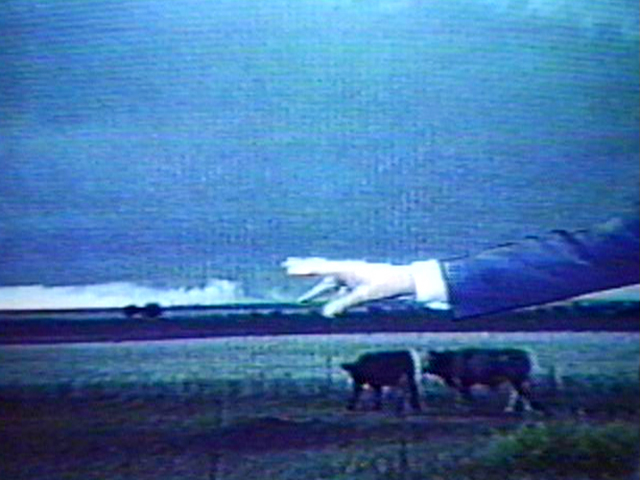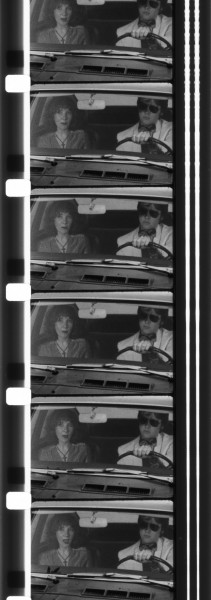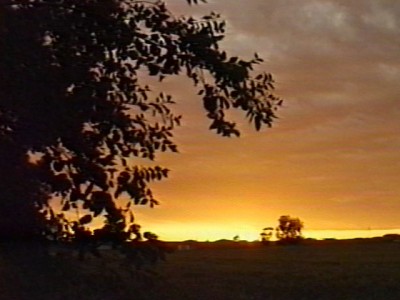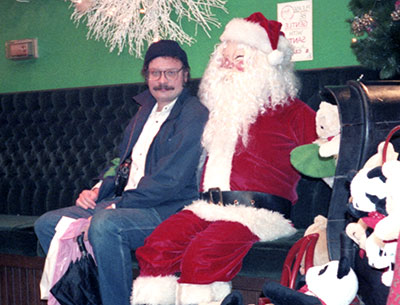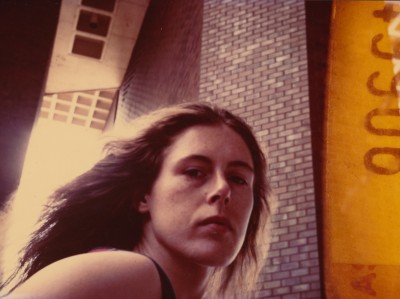
I must’ve been twelve or thirteen years old the day I saw Vera Rhuba Ralston open a stage door as she answered a knock from David Brian, her costar in this Republic picture I was watching. The moment her blond curls ignited the film emulsion and the sound track issued forth with her musical theme, I was hooked. Here were people not dissimilar to my mom and dad, frumpy yet friendly folk, who instead of driving a truck or working in a bookbinding factory, were employed in a dream factory of candy-coated imagery that rumbled with melodramatic melodies which plucked the heartstrings. Here was sadness too: the obvious lack of talent which weighed down the actress more heavily than her expanding physique. And as for the actor, well: the white dusting of lacquered filaments were cemented to his scalp more securely than the denture cream used to keep intact a smile that in days of old blazed with glory. It was all here on the big screen: the dreams and despair of our moviegoing culture. My heritage as a ticket buyer into the human race.
Initially trained as a commercial artist, George Kuchar (August 31, 1942 – September 6, 2011) and his twin brother Mike began making 8mm films as teenagers in the 1950s. After shocking their local amateur filmmaking club with their risqué takes on tawdry melodrama—namely Pussy on a Hot Tin Roof (1961)—they became stars of the NYC underground scene in the 1960s, befriending the likes of Jonas Mekas and Jack Smith. Always working within the constraints of minuscule budgets and nonprofessional actors, the Kuchars' cheaply made pictures blossomed in the shackles of poverty, the lurid colors of the cheap makeup and sets enhanced by the saturation of Kodachrome reversal stock. In titles such as Born of the Wind (1962), Lust for Ecstasy (1963), A Town Called Tempest (1963) and Corruption of the Damned (1965), the uneven acting, stock music, lack of sync sound, hyperbolic narration and primitive special effects combined to create brilliant gems unlike anything seen before or since. Perhaps one of his most screened titles, Hold Me While I’m Naked (1966) is now considered an underground classic and the later I, An Actress (1977) was selected for preservation by the National Film Registry in 2011.
With one foot firmly planted in classic, sentimental Hollywood, the Kuchars celebrated the melodrama of everyday people and their ever-fluctuating emotions, obsessions and repressions. Yet, their films are never fully camp; they are filled with as much beauty, pathos, awe and reflexivity as raunch and humor. Despite their deep influence on popular artists and filmmakers—including John Waters, Andy Warhol, Todd Solondz and David Lynch—the Kuchars never aspired to mainstream success. Their particular ethos and aesthetic thrived in the glorious, glamorous gutter.
... Picture after picture ruined by a lackluster lovely leaden enough to sink the loftiest cinematic creations with her abominable acting. But I loved her too! If a producer was willing to star her in a picture then I could put my mom or my friends' moms in pictures too! Evidently all one had to do was to tell them how to open a door with some nice, atmospheric lighting in place and have the music come in at the right moment. All you needed was that—AND LOVE.
In 1971, George left his commercial art career to teach filmmaking at the San Francisco Art Institute, adding his student productions to a mushrooming filmography. Among his many talents, George was a talented writer—as evidenced in his book Reflections from a Cinematic Cesspool (Zanja Press, 1997) along with numerous essays and of course, film scripts—underground comic illustrator and a painter who exhibited regularly.
While imbuing his films with a more personal presence, George Kuchar breezily transitioned to lo-fi video and irreverently harnessing its canned effects to an ecstatic degree. With the means of production simplified, he quickly churned out innumerable spectacular works of fact and fiction, many taking the form of a video diary—including the Weather Diaries, documents of his adventures chasing storms, among other dangers existential, physical and paranormal. A consummate example, Wild Night in El Reno (1977) was actually the 16mm precursor to the video series and serves as a perfect introduction to the diaries and the filmmaker himself.
Though free of any hint of artworld pretension, George Kuchar’s film and video work left undeniable impressions upon queer, underground and cult cinema and performance art video—not to mention countless YouTube denizens. Kuchar’s work exudes an earnest joy not often sustained by artists of any kind, certainly rare for a filmmaker who pushed the limits of respectability for over fifty years.
ABOUT THE COLLECTION
The HFA is the repository for the original material for over thirty of George Kuchar’s works, dating from the mid-Sixties to the mid-Eighties. Including titles such as Asphalt Ribbon (1977), Motel Capri (1986) and The Power of the Press (1977), many of these films were made in conjunction with his students at the San Francisco Art Institute, where George taught for over thirty-five years. The later classroom movies were produced on video, but originally they were created on 16mm film, usually reversal, on whatever stock was the cheapest. Kuchar recalls, “Whole movies were shot on stock that was so outdated that it looked like a fog machine was used in every scene.” Anyone familiar with Kuchar’s work will know such “defects” were always used to the film’s advantage.
The HFA has worked with the Pacific Film Archive and with the National Film Preservation Foundation to preserve many of these unique films. We intend to continue to increase access to many more, most of which have not been seen outside of the Art Institute.
The collection also includes preservation copies of many of Kuchar's videos made outside of the classroom and viewing copies of many of his works, as well as notebooks, scrapbooks, scripts, photographs, letters, comics and other artwork and ephemera. The holdings are searchable in HOLLIS.
George Kuchar's videos are distributed through Video Data Bank and Electronic Arts Intermix. His films are in distribution through Anthology Film Archives.
ADDITIONAL RESOURCES
Kuchar Brothers' website


